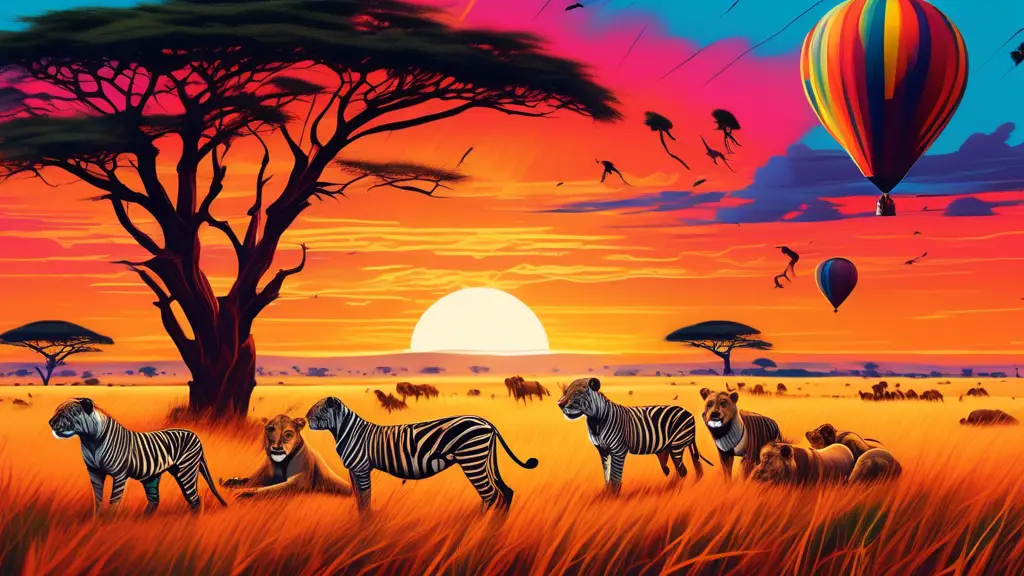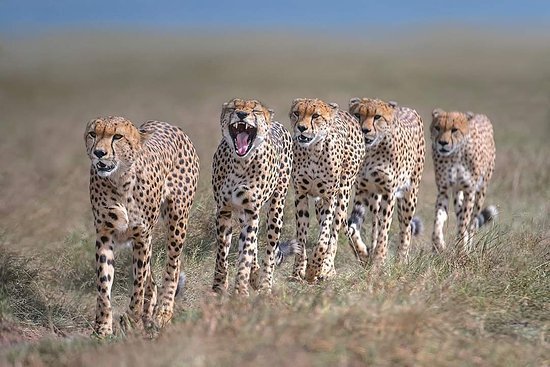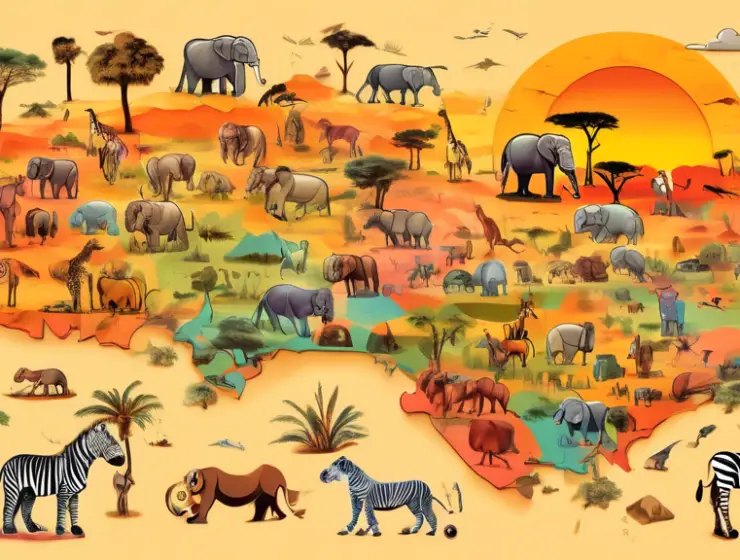Introduction to Masai Mara
Masai Mara National Reserve, often simply known as the Masai Mara, is one of Africa’s most famous safari destinations. Located in the southwest of Kenya, covering an area of 1,510 square kilometers, it forms the northern continuation of the Serengeti National Park in Tanzania. The reserve is named after the Maasai people, the traditional inhabitants of the area, and the Mara River, which flows through this territory. The Masai Mara is renowned for its exceptional population of lions, leopards, cheetahs, and its annual migration of zebra, Thomson’s gazelle, and wildebeest to and from the Serengeti every year from July to October, known as the Great Migration.
The Great Migration
The Great Migration is truly one of nature’s largest spectacles and a major draw for visitors to the Masai Mara. Over 1.5 million wildebeest, zebra, and gazelle trek across the plains in search of fresh pasture, braving predators and perilous river crossings. This phenomenon is not only a critical phase in the lifecycle of the reserve’s herbivores but also a dramatic display that underscores the raw beauty and harsh reality of the natural world.
Timing Your Visit
To witness the Great Migration, visitors are typically recommended to plan their safari between July and October when the migration is in full swing. However, the Masai Mara offers exceptional wildlife viewing year-round, with each season bringing its own unique benefits and spectacles.
Wildlife and Biodiversity
Apart from the migratory species, Masai Mara is home to over 95 species of mammals and over 570 recorded species of birds. This rich biodiversity includes the Big Five: lions, leopards, elephants, buffalo, and rhinoceros. The reserve’s landscapes of sprawling savannahs, rolling hills, and riverine woodlands also provide diverse habitats that support a wide array of wildlife.
Predator Sightings
The reserve is particularly known for its large populations of lions, leopards, and cheetahs. It’s one of the few places in Africa where visitors can fairly reliably encounter these magnificent animals in their natural environment. Observation of predator behavior, from hunting to nurturing of the young, provides an insightful peek into the dynamics of these complex animals.
Guided Safaris and Accommodations
The Masai Mara offers a range of safari experiences, from day trips and guided tours to luxury safaris. Accommodations inside the reserve range from basic campsites to luxurious lodges, each providing a different level of comfort and perspective on this vast wilderness.
Choosing a Safari Guide
When selecting a safari in the Masai Mara, it’s important to choose a qualified and experienced guide. Knowledgeable guides enhance the experience by sharing detailed information about the behaviors, ecology, and conservation of the animals and the ecosystems. Many guides are local Maasai, who bring a personal depth to the tour with their cultural heritage.
Conservation Efforts
Conservation is a crucial aspect of ensuring that the Masai Mara remains a viable habitat for its myriad species. Efforts include anti-poaching campaigns, habitat restoration projects, and sustainable tourism practices. Additionally, community-based conservation programs engage local populations and help to reduce human-wildlife conflicts.
Community Involvement
Involving the local Maasai communities in tourism has provided them with sustainable income alternatives that contribute to conservation efforts. Many safaris and lodges collaborate with local villages to improve community welfare and promote environmental stewardship.
Cultural Experiences
In addition to wildlife viewing, the Masai Mara offers cultural experiences that allow visitors to learn about the Maasai people’s rich cultural traditions. Many safari tours include visits to Maasai villages, where tourists can observe traditional dances, craftwork, and way of life. This interaction is not only an educational experience but also supports the local communities economically.
Conclusion
Visiting the Masai Mara is a profound journey into the heart of Africa’s wilderness, offering not just game drives but a deeper understanding of nature’s complexities and the importance of conservation. Whether you are planning a luxury escape or a rugged adventure, Masai Mara’s unparalleled landscapes, rich biodiversity, and cultural depth promise an unforgettable safari experience.





